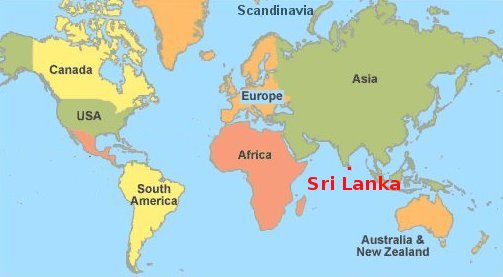| 
| 
|
|
Rebuttal of Jeff Ritterman and Truthout.org:
The Monsanto's herbicide and its alleged link with Kidney Disease.
Pseudoscience at its best?

|

|
The second Image from the left shows Roundup products which are freely sold to farmers and Golf clubs in Canada and the USA. A spry bottle is freely sold for home horticultural use.
Truthout.org claims that "unsubstantiated opinions" do not appear in its columns. Also, as a "matter of policy", it does not allow rebuttals or critical reviews of its articles. This means it only puts up the opinion that fits in with its advocacy agenda. This is especially unfortunate in environmental issues given the financial power of profit-motivated agri-business, as well as the political power and capacity of environmental militants to distort facts to serve deeply held beliefs.
We review the 2000-word interview and news analysis with Jeff Ritterman, M. D. publsihed in Truthout on Thursday, 10th July 2014 (seeClaim of RoundUp being linked to Kidney disease made by TruthOut writer ). He refers to Chronic Kidney Disease of Unknown orgin (CKDU) reported in several central American countries, parts of India and in the North-central province (NCP) of Sri Lanka. The disease in Sri Lanka was first diagnosed in 1992-6. It is well contained in a region of some 10,000 sq. miles, providing a self-contained text-book case for a scientific study .
Public fear of the disease pointed to agrochemicals extensively used in this agricultural country. However, the disease is only found in the NCP which uses relatively less agro-chemicals compared to the tea and rubber plantations which are CKDU-free. A WHO-sponsored research team launched an intense two-year study, looking into trace metals (e.g., arsenic, cadmium, lead etc.), residues of pesticides (including glyphosate) in food, soil and water. The results were published in a well-established bio-med journal:
Publication in Peer-reviewed Journal ).
The WHO study found that levels of toxic metals or traces of herbicides in the drinking water were below the maximum allowed levels stipulated by the WHO! These results have been confirmed by independent research including a collaboration with the University of Tokyo.
Cfurthermore, the herbiside glyphosate has been used in Sri Lanka only for five or six years, while the disease has a history of at least two decades.
Jeff Ritterman in his news analysis does not allude to all this, and states that "Dr. Channa Jayasumana, and his two colleagues, … have put forward a unifying hypothesis that could explain the origin of the disease. This is the claim that glyphosate forms chelates with arsenic and calcium ions, and that "the complex can be ingested, inhaled or absorbed through the skin". But no evidence for such arsenic compounds and such behaviour exist. Ritterman says that "this elegant theory advanced by Dr. Jayasumana and colleagues can only be considered hypothesis-generating".
If there is no detectable incriminating amounts of glyphosate and arsenic in the water or food, the hypothesis cannot hold. Jaysumana et al. had proposed that glyphosate and arsenic react with the hard water to form "chelates" that are extremely insoluble in water. Hence any traces of glyphosate and arsenic in the water would precipitate and make the drinking water more safe!
Unsurprisingly, Jayasumana et al. could not publish their hypothesis in any journal of a learned society. Instead, the article appeared in a new type of journal which publishes submissions for a fee. This genre of publishing has been exposed in the article "Who's Afraid of Peer Review?" ("click here for Peer-review article ) published in Science, the prestigious flagship of the American Association for the Advancement of Science .
This extremely tenuous "hypothesis" published in an unknown "pay-as-you-go" journal has had three types of reception. The Monsanto foes were delighted and hailed it. The other reaction came from scientists who ignored it claiming it needs no rebuttal, or commented on its insecure chemistry only briefly . The third group remained silent for fear of being labeled "paid agents of agri-business".
A few months after the appearance of the glyphosate-arsenic toxicity "hypothesis" we had completed one phase of our own research on CKDU. Our conclusions were presented in a well-known peer-reviewed journal ( Salty and Ionic waters as the cause of CKDU ) entitled "Environmental Geochemistry and Health", in August 2014. A coherent explanation of the rise of CKDU in Sri Lanka, consistent with the WHO data, and indicating a probable cause of CKDU were presented. The excessively high ionicity (salinity) and the protein-denaturing salt effect of the water in the affected areas were implicated.
Jeff Ritterman says that "While the exact cause of CKDU has not been proven conclusively, both Sri Lanka and El Salvador have invoked the precautionary principle. ... Sri Lanka banned glyphosate in March of this year because of concerns about CKDU." In fact, Sri Lanka banned Glyphosate only in December 2014, and only in a few districts in the affected area. In reality, pandering to public fear of "agro-chemicals" during a presidential election has more to do with the ban than any rational considerations.
An year after the hypothesis implicating glyphosate, no experiments supporting it have been given. Instead, authors have assumed important political positions riding on the tide of anti-herbicide public opinion that runs counter to existing scientific knowledge, and counter to the known lack of glyphosate or arsenic traces in the drinking water of the CKDU area.
What dumb-founds most people is why Glyphosate is targeted when its presence has not been established in the Sri Lankan NCP water. The answer is found in militant environmental activism against GMO products. Glyphoste is crucial to implementing the GMO project. Meanwhile, extensive use of glyphosate, as well as fertilizers (alleged to contain some arsenic residues by Jayasumana et al.) are used in most parts of Sri Lanka, including in areas where the water is quite hard, but where no CKDU is observed.